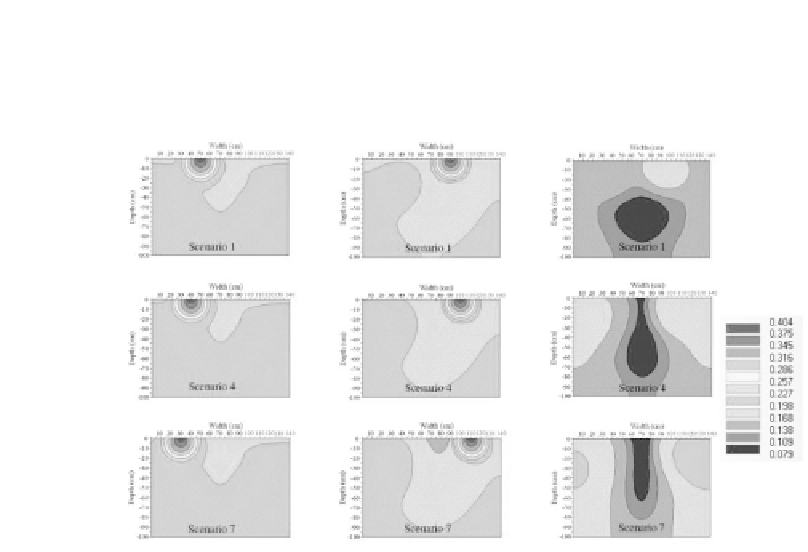Agriculture Reference
In-Depth Information
were higher in case of short IPED (20 cm) than long IPED (30 and 40 cm). This is due
to the limited lateral extension of the wetted area around emitter in case of long IPED.
FIGURE 3
Simulated water content distribution around the emitter [m
3
.m
-3
] (left column:
after first irrigation event, middle column: after second irrigation event, and right column: after
last irrigation event).
Figure 4 visualizes the progress of the water content for an observation point at
the soil surface 10 cm laterally from the plant trunk for simulation scenarios 1, 4, and
7. The water content fl uctuations are more pronounced in case of short IPED. The
water content reached its highest value (0.30 m
3
m
-3
) due to the large amount of water
added to the soil at the end of each irrigation event, thereafter, it decreased to its low-
est value (0.14 m
3
m
-3
) due to water extracted by plant roots during the period between
the two successive irrigation events. On the other hand, for the longest IPED (40 cm),
the fl uctuations in water content were less distinct changing from 0.12 to 0.09 m
3
m
-3
refl ecting the limited root water uptake. This is attributed to the limited extension of
wetted area that causes limited available amount of water in the zone of maximum
root density. Therefore, it is preferable to regulate the IPED according to soil hydraulic
properties.















Search WWH ::

Custom Search